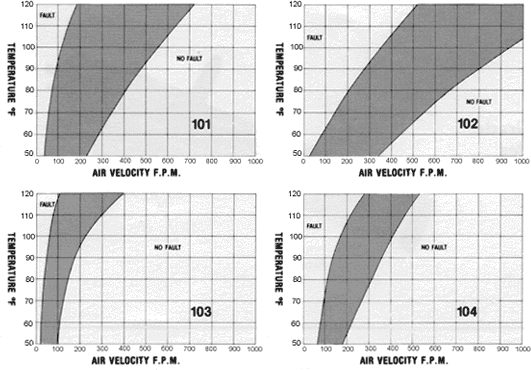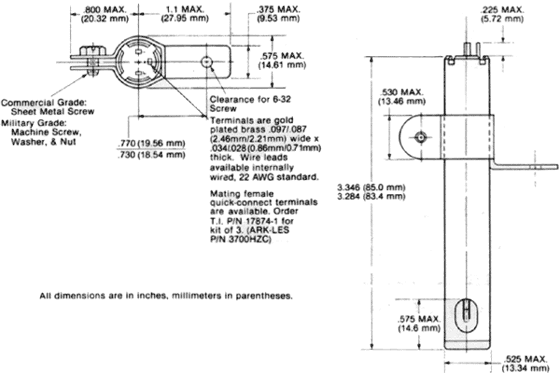Spec Overview |
Supply Voltage |
30 VDC maximum |
Switching Capacity |
400 milliamps maximum |
Configuration |
SPST or DPST |
Reset |
Automatic or Manual |
Mode |
Normally open or closed |
Weight |
Approximately 20 grams |
Power Dissipation |
Approximately 3 watts |
Life |
100,000 cycles |
Operating Temp. Range |
10°C to 50°C (50°F to 120°F) |
Ambient Temp. Range |
Up to 150°C (300°F) |
Vibration |
10G, 10–500 Hz per MIL-STD-202, Method 202, Condition A |
Shock |
100G, for 6ms per MIL-STD-202, Method 213, Condition C |
Humidity |
10 days per MIL-STD-202, Method 106 |
Salt Spray |
48 Hours per MIL-STD-202, Method 101, Condition B |
Temperature vs. Velocity Curve
Note: The gray region is the deadband, in which sensor could be in either the fault or the no–fault
condition. Number on curve is for building part number of device.
(Scroll down for information on building a part numbers, see at left for definitions.)

Configuration
Below is the typical 2SE configuration, but others are available. Drawing is for reference only.
